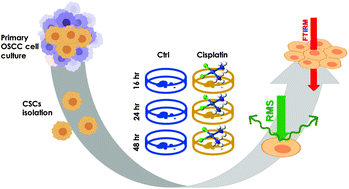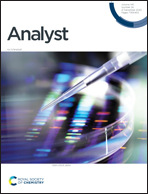Exploiting fourier transform infrared and Raman microspectroscopies on cancer stem cells from oral squamous cells carcinoma: new evidence of acquired cisplatin chemoresistance
Abstract
Oral Squamous Cells Carcinoma (OSCC) is characterised by the risk of recurrence and the onset of a refractoriness response to chemotherapy drugs. These phenomena have been recently related to a subpopulation of Cancer Stem Cells (CSCs), which have either an innate or acquired drug resistance, triggered by chemotherapy treatments. In this light, to precisely target chemotherapy regimens, it is essential to improve knowledge on CSCs, with a particular focus on their molecular features. In this work, a subpopulation of CSCs, isolated by tumour sphere formation from primary OSCC cells, were treated with cisplatin for 16, 24 and 48 hours and analysed by infrared absorption and Raman microspectroscopies. CSC spectral data were compared with those obtained in previous work, for primary OSCC cells treated under the same conditions. Routine viability/apoptosis cell-based assays evidenced in CSCs and primary OSCCs, a similar degree of sensitivity to the drug at 24 hours, while a reversion of the conventional monotonic time response exhibited by OSCCs was shown by CSCs at 48 hours. This peculiar time response was also supported by the analysis of IR and Raman data, which pinpointed alterations in the lipid composition and DNA conformation in CSCs. The results obtained suggest that CSCs, although sharing with OSCC cells a similar sensitivity to cisplatin, display the onset of a mechanism of chemoresistance and enrichment of resistant CSCs as a result of drug treatment, shedding new light on the severe issue of refractoriness of some patients to chemotherapy conventionally used for OSCC.



 Please wait while we load your content...
Please wait while we load your content...